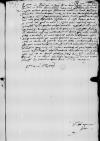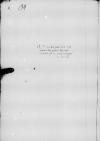Letter #2165
Ioannes DANTISCUS to Tiedemann GIESESchmolainen (Smolajny), 1539-06-16
English register:
On the previous day, Dantiscus sent the addressee three salmon and a letter received from the Voivode of Marienburg (Malbork) [Georg von Baysen (Jerzy Bażyński)]. As for the division of offices [after Ludwig von Mortangen’s (Mortęski’s) death], the Voivode’s advice is the same as Giese’s, wishing Dantiscus to write to the King [Sigismund I Jagiellon] on the matter on behalf of all [the members of the Royal Prussian Council]. However, Dantiscus promises to do so only after [the councillors] mention this to the King in an open letter, so that it is clear this is not his personal initiative but the position of all [the Prussian lords]. He also warns that a delay could be to the advantage of the one [Jan Sokołowski?] who is trying to become a member of the Prussian Council.
The administrator of the Allenstein (Olsztyn) estates [Achatius Trenck], who is on his way to Frauenburg (Frombork), has just arrived. He says he sent a letter to Giese the day before.
Manuscript sources:
Auxiliary sources:
Prints:
| ||||||||
Text & apparatus & commentary Plain text Text & commentary Text & apparatus
Reverendissimo in Christo Patri, domino
Reverendissime in Christo Pater et Domine, frater et amice carissime ac honoran(de) or honoran(dissime)⌈honoran(de)honoran(de) or honoran(dissime)⌉.
Salutem et fraternam commendationem.
Heri sub ipsa meridie tres captos pisces, quos usu salmones vocant, et litteras[1] magnifici domini
Aliud in praesenti non restat avocorque ab hac scriptione adventu venerabilis domini
Eandem Dominationem Vestram Reverendissimam diutissime prosperrime valere cupio summopere.
Ex
Reverendissimae Dominationis Vestrae frater integerrimus


 p. 194
p. 194